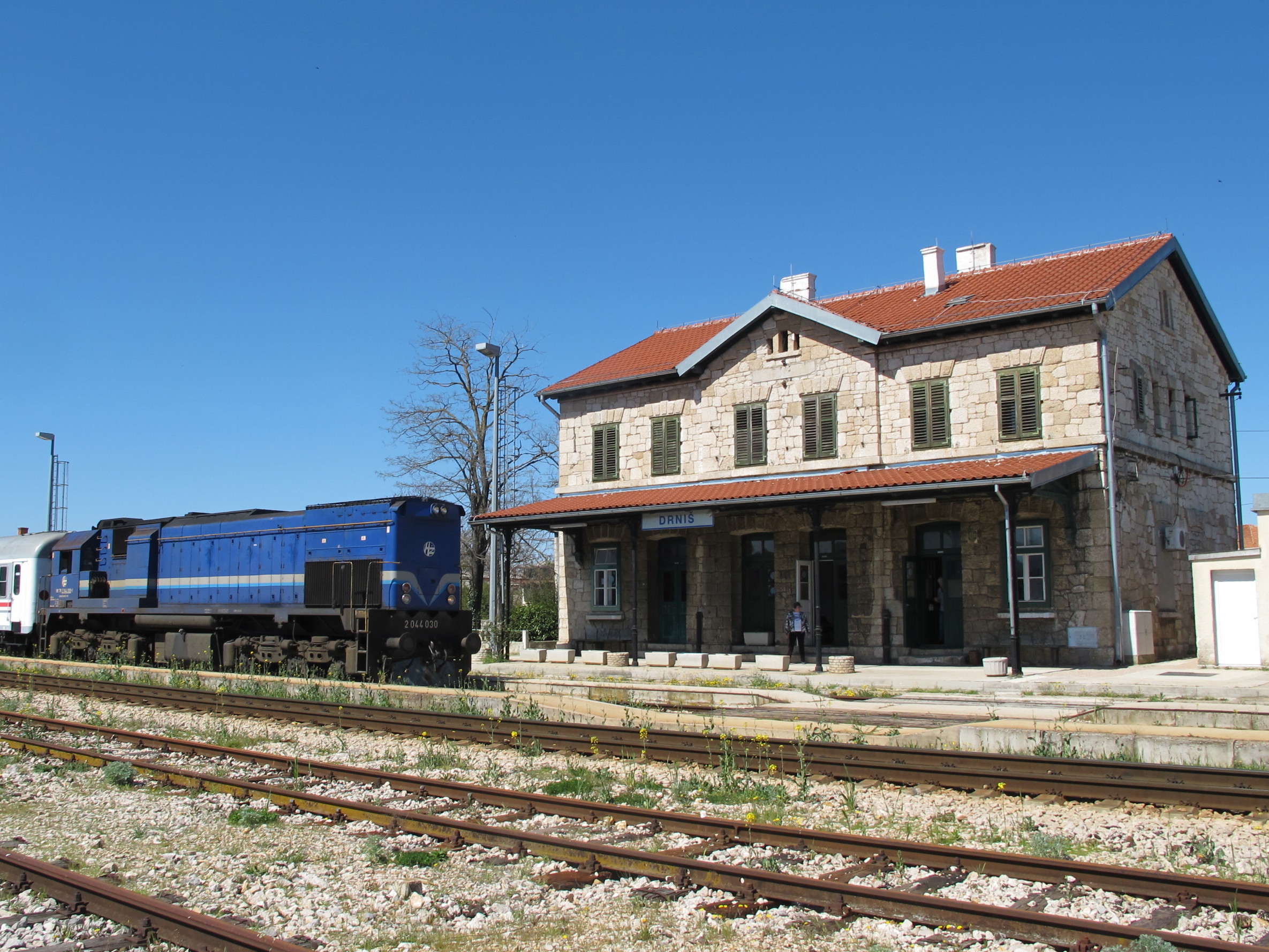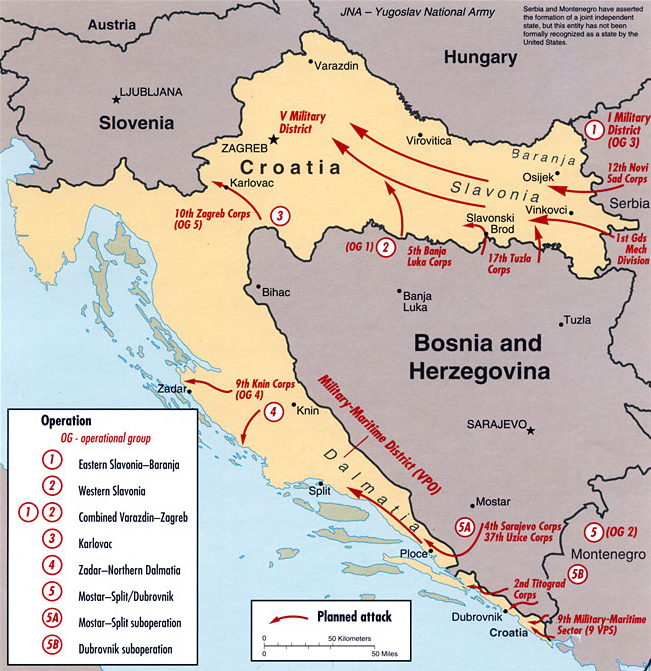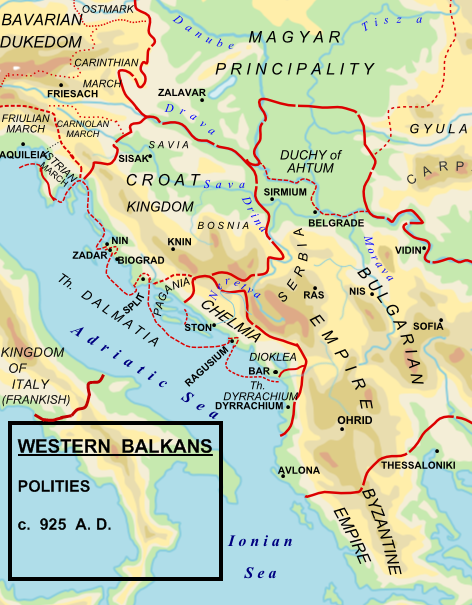|
Drniš
Drniš is a town in the Šibenik-Knin County, Croatia. Located in the Dalmatian Hinterland, it is about halfway between Šibenik and Knin. History The name Drniš was mentioned for the first time in a contract dated March 8, 1494. However, there are traces of an older Middle Ages' fortress built by Croatian aristocrat family Nelipić at the site called Gradina dominating the landscape. The town was conquered by the Ottoman Empire, Ottoman Turks in 1522 due to its strategic location. Many buildings from this time period are still preserved today. During the Baroque period, the mosque built by the Turks was transformed into a church. During Ottoman rule, it was nahiya seat of Petrovo Polje (Croatia), Petrovo Polje; which initially bounded to Croatian vilayet of Sanjak of Bosnia between 1522 and 1537, laterly to Sanjak of Klis, Sanjak of Kilis between 1537 and 1664 and again between 1670 and 1683. Venetian Republic briefly conquered Drniš in 1664 during Cretan War (1645–1669), C ... [...More Info...] [...Related Items...] OR: [Wikipedia] [Google] [Baidu] |
Petrovo Polje (Croatia)
The Petrovo Polje (, "Peter's Field") is a karstic field in the northern part of Dalmatian Hinterland in Croatia. Geography Petrovo Polje is the shape of an isosceles triangle long and wide, and is surrounded by mountains Svilaja, Promina and Moseć. It slopes from the north-east at 320 m.a.s.l. to its south-western end at 265 m.a.s.l. Its area is . Climate The climate of Petrovo Polje has the elements of both the cooler and harsher continental climate of the north and the warmer climate predominant in the south. In the winter, jugo and bora winds are common. The average number of frost days per year is 30, between October and April. Summers are dry. Settlements The settlements are situated on the edge of the field: Drniš, Kričke, Ružić, Umljanović, Kljake, Čavoglave, Gradac, Otavice, Kanjane, Parčić, Miočić, Biočić, Tepljuh, Siverić, Badanj. Kadina Glavica is located on the hill with the same name, while Baljci and Mirlović Polje are locat ... [...More Info...] [...Related Items...] OR: [Wikipedia] [Google] [Baidu] |
Croatian War Of Independence
The Croatian War of Independence) and (rarely) "War in Krajina" ( sr-Cyrl-Latn, Рат у Крајини, Rat u Krajini) are used. was an armed conflict fought in Croatia from 1991 to 1995 between Croats, Croat forces loyal to the Government of Croatia—which had declared Independence of Croatia, independence from the Socialist Federal Republic of Yugoslavia (SFRY)—and the Serbs, Serb-controlled Yugoslav People's Army (JNA) and Serbs of Croatia, local Serb forces, with the JNA ending its combat operations by 1992. A majority of Croats supported Croatia's independence from Yugoslavia, while many ethnic Serbs living in Croatia, supported by Republic of Serbia (1992–2006), Serbia, opposed the secession and advocated Serb-claimed lands to be in a common state with Serbia. Most Serbs sought a new Serb state within a Yugoslav federation, including areas of Croatia and Bosnia and Herzegovina with ethnic Serb majorities or significant minorities, and attempted to conquer as muc ... [...More Info...] [...Related Items...] OR: [Wikipedia] [Google] [Baidu] |
Šibenik-Knin County
Šibenik-Knin County (; ) is a county in southern Croatia, located in the north-central part of Dalmatia. The biggest city in the county is Šibenik, which also serves as county seat. Other notable towns in the county are Knin, Vodice, Drniš and Skradin. The county covers 2984 km2. It includes 242 islands and national parks, Krka and Kornati. Administrative division Šibenik-Knin county is administratively subdivided into: * City of Šibenik (county seat) * City of Knin * Town of Drniš * Town of Skradin * Town of Vodice * Municipality of Biskupija * Municipality of Civljane * Municipality of Ervenik * Municipality of Kijevo * Municipality of Kistanje * Municipality of Murter-Kornati — Murter, the capital of the municipality * Municipality of Pirovac * Municipality of Primošten * Municipality of Promina — Oklaj, the capital of the municipality * Municipality of Rogoznica * Municipality of Ružić — Gradac, the capital of the municipality * Munici ... [...More Info...] [...Related Items...] OR: [Wikipedia] [Google] [Baidu] |
List Of Cities And Towns In Croatia
An urbanized area in Croatia can gain the status of ''grad'' (which can be translated as town or city as there is no distinction between the two terms in Croatian language, Croatian) if it meets one of the following requirements: # is the center of a Counties of Croatia, county (''županija''), or # has more than 10,000 residents, or # is defined by an exception (where the necessary historical, economic or geographic reasons exist) A city (town) represents an urban, historical, natural, economic and social whole. The suburbs comprising an economic and social whole with the city, connected with it by daily migration movements and daily needs of the population of local significance, may also be included into the composition of a city as unit of local self-government. ''Grad'' (city/town) is the local administrative equivalent of ''Municipalities of Croatia, općina'' (translated as "Municipalities of Croatia, municipality"), with the only distinction being that the former usually ... [...More Info...] [...Related Items...] OR: [Wikipedia] [Google] [Baidu] |
Treaty Of Rapallo, 1920
The Treaty of Rapallo was an agreement between the Kingdom of Italy and the Kingdom of Serbs, Croats and Slovenes in the aftermath of the First World War. It was intended to settle the Adriatic question, which referred to Italian claims over territories promised to the country in return for its entry into the war against Austria-Hungary, claims that were made on the basis of the 1915 Treaty of London. The wartime pact promised Italy large areas of the eastern Adriatic. The treaty, signed on 12 November 1920 in Rapallo, Italy, generally redeemed the promises of territorial gains in the former Austrian Littoral by awarding Italy territories generally corresponding to the peninsula of Istria and the former Princely County of Gorizia and Gradisca, with the addition of the Snežnik Plateau, in addition to what was promised by the London treaty. The articles regarding Dalmatia were largely ignored. Instead, in Dalmatia, Italy received the city of Zadar and several islands. Other ... [...More Info...] [...Related Items...] OR: [Wikipedia] [Google] [Baidu] |
Dalmatian Hinterland
The Dalmatian Hinterland () is the southern inland hinterland in the historical Croatian region of Dalmatia. The name means 'beyond (the) hills', which is a reference to the fact that it is the part of Dalmatia that is not coastal and the existence of the concordant coastline where hills run parallel to the coast. Geography Dalmatian Zagora, in the strict sense, spans from the hinterland east of Šibenik to the border with Bosnia and Herzegovina and continues south to Vrgorac, just north of the Neum corridor. Its borders are present in two counties: Split-Dalmatia and Šibenik-Knin. The terrain in Zagora is fairly rugged: in the region immediately bordering the coastline, it is mostly flat but dry, mainly covered with ''makija'' (maquis, macchia). More inland, greener pastures can be seen, as the climate and elevations change. Karst topography dominates the landscape. The land is interspersed with river canyons, of Krka, Čikola, Cetina and others. One national park is ... [...More Info...] [...Related Items...] OR: [Wikipedia] [Google] [Baidu] |
Croatian Vilayet
The Croatian Vilayet (, ) was a temporary borderland entity in Dalmatia in the 16th century. Its capital was Sinj. Establishment and territory Immediately after the Ottoman capture of the Dalmatian hinterland and Lika from the Kingdom of Croatia and the Republic of Venice in the 1520s, they organized it as a borderland entity and named it the Vilayet of "Croats" (, ). The southern border of the territory of this vilayet was river Cetina while north-western border was Lika and river Zrmanja. It also included region around river Krka. This territory was administratively governed as the Croatian vilayet which belonged to the Sanjak of Bosnia and listed as such in its 1530 ''defter'' (tax registry). Administration The capital of the vilayet was Sinj. Its territory was under the jurisdiction of the Skradin ''kadiluk''. Aličić claimed that territories of the Croatian vilayet and Skradin kadiluk were the same and that the official Ottoman administrative unit, Croatian vilayet, w ... [...More Info...] [...Related Items...] OR: [Wikipedia] [Google] [Baidu] |
Miško Zebić
Miško () is a South Slavic masculine given name. Notable people with the name include: * Miško Jovanović (1878–1915), Bosnian Serb agent * Miško Kranjec (1908–1983), Slovenian writer * Miško Mirković (born 1966), retired Serbian footballer * Miško Ražnatović Miodrag "Miško" Ražnatović ( sr-cyr, Миодраг Мишко Ражнатовић; born September 16, 1966) is a Serbian lawyer and Sports agent#European basketball, sports agent and former professional basketball player. He is the chairman, ... (born 1966), Serbian lawyer and sports agent, and former basketball player * Miško Šuvaković (born 1954), Serbian artist See also * * Misko, surname * Mišković, surname {{DEFAULTSORT:Misko, Mishko Slavic masculine given names Serbian masculine given names Masculine given names ... [...More Info...] [...Related Items...] OR: [Wikipedia] [Google] [Baidu] |
Kingdom Of Serbs, Croats And Slovenes
The Kingdom of Yugoslavia was a country in Southeast and Central Europe that existed from 1918 until 1941. From 1918 to 1929, it was officially called the Kingdom of Serbs, Croats, and Slovenes, but the term "Yugoslavia" () has been its colloquial name as early as 1922 due to its origins. "Kraljevina Jugoslavija! Novi naziv naše države. No, mi smo itak med seboj vedno dejali Jugoslavija, četudi je bilo na vseh uradnih listih Kraljevina Srbov, Hrvatov in Slovencev. In tudi drugi narodi, kakor Nemci in Francozi, so pisali že prej v svojih listih mnogo o Jugoslaviji. 3. oktobra, ko je kralj Aleksander podpisal "Zakon o nazivu in razdelitvi kraljevine na upravna območja", pa je bil naslov kraljevine Srbov, Hrvatov in Slovencev za vedno izbrisan." (Naš rod ("Our Generation", a monthly Slovene language periodical), Ljubljana 1929/30, št. 1, str. 22, letnik I.) The official name of the state was changed to "Kingdom of Yugoslavia" by King Alexander I on 3 October 1929. The pre ... [...More Info...] [...Related Items...] OR: [Wikipedia] [Google] [Baidu] |
Italy
Italy, officially the Italian Republic, is a country in Southern Europe, Southern and Western Europe, Western Europe. It consists of Italian Peninsula, a peninsula that extends into the Mediterranean Sea, with the Alps on its northern land border, as well as List of islands of Italy, nearly 800 islands, notably Sicily and Sardinia. Italy shares land borders with France to the west; Switzerland and Austria to the north; Slovenia to the east; and the two enclaves of Vatican City and San Marino. It is the List of European countries by area, tenth-largest country in Europe by area, covering , and the third-most populous member state of the European Union, with nearly 59 million inhabitants. Italy's capital and List of cities in Italy, largest city is Rome; other major cities include Milan, Naples, Turin, Palermo, Bologna, Florence, Genoa, and Venice. The history of Italy goes back to numerous List of ancient peoples of Italy, Italic peoples—notably including the ancient Romans, ... [...More Info...] [...Related Items...] OR: [Wikipedia] [Google] [Baidu] |
Venetian Dalmatia
Venetian Dalmatia () refers to the territories of Dalmatia under the rule of the Republic of Venice, mainly from the 15th to the 18th centuries. Dalmatia was first sold to Venice in 1409 but Venetian Dalmatia was not fully consolidated until 1420, though Venice had already controlled a number of Dalmatian cities and islands since the year 1000 AD. It lasted until 1797, when the Republic of Venice fell to the forces of Napoleon Bonaparte and Habsburg Austria. Geography The Republic of Venice had possessions in the Balkans and in the eastern Mediterranean Sea, including Venetian Albania in the Adriatic Sea and the Venetian Ionian Islands in western Greece. Its possessions in Dalmatia stretched from the Istria peninsula to what is today coastal Montenegro: they included all the Dalmatian islands and the mainland territories from the central Velebit mountains to the northern borders of the Republic of Ragusa. With the 1718 Treaty of Passarowitz, Venice enlarged its possessions i ... [...More Info...] [...Related Items...] OR: [Wikipedia] [Google] [Baidu] |
Great Turkish War
The Great Turkish War () or The Last Crusade, also called in Ottoman sources The Disaster Years (), was a series of conflicts between the Ottoman Empire and the Holy League (1684), Holy League consisting of the Holy Roman Empire, Polish–Lithuanian Commonwealth, Poland-Lithuania, Republic of Venice, Venice, Tsardom of Russia, Russia, and Kingdom of Hungary (1526–1867), the Kingdom of Hungary. Intensive fighting began in 1683 and ended with the signing of the Treaty of Karlowitz in 1699. The war was a resounding defeat for the Ottoman Empire, which for the first time lost substantial territory, in Ottoman Hungary, Hungary and the Polish–Lithuanian Commonwealth, as well as in part of the western Balkans. The war was significant also for being the first instance of Russia joining an alliance with Western Europe. Historians have labeled the war as the Fourteenth Crusade launched against the Turks by the papacy. The French did not join the Holy League, as France had agreed to r ... [...More Info...] [...Related Items...] OR: [Wikipedia] [Google] [Baidu] |







